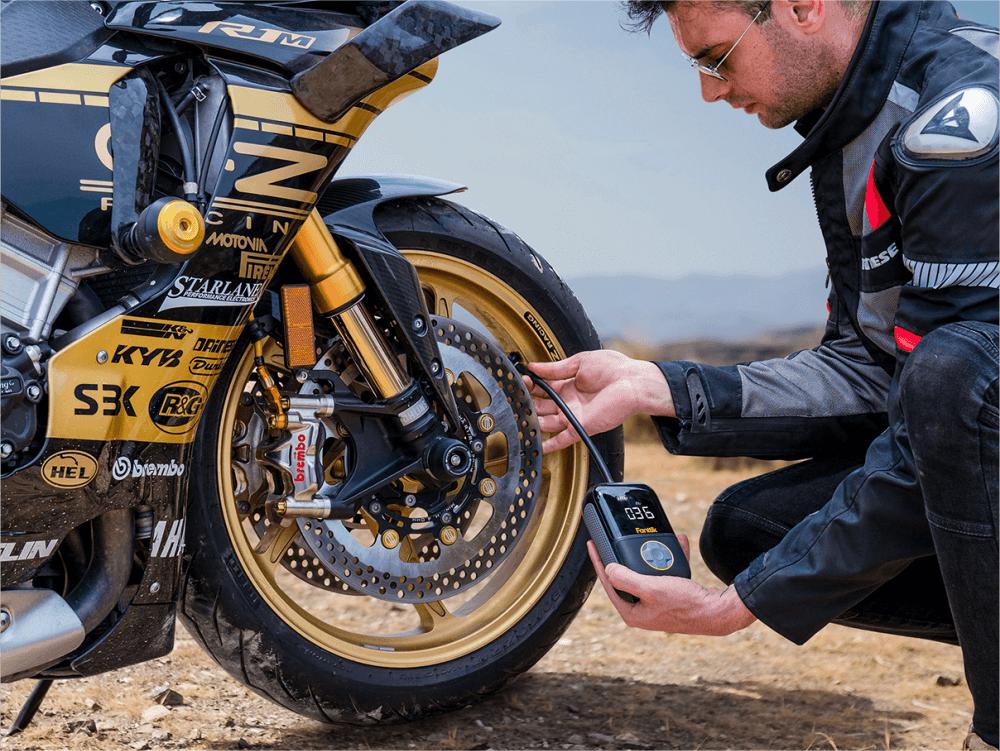When it comes to it, there are many different approaches and viewpoints to consider portable tire inflator for bike.
When it comes to inflating your bike tires, you have two main options: portable tire inflators and traditional pumping methods. Both methods have their advantages and disadvantages, and choosing the right one for you depends on various factors. In this article, we will explore the pros and cons of each method to help you make an informed decision.
Convenience and Portability
One of the key advantages of portable tire inflators is their convenience and portability. These compact devices are lightweight and can easily be carried in your backpack or attached to your bike. They are battery-powered or rechargeable, allowing you to inflate your tires anytime, anywhere, without the need for an external power source.
On the other hand, traditional pumping methods, such as hand pumps or floor pumps, require physical effort and can be cumbersome to carry around. While they may be suitable for home use or in a workshop, they are not as practical for on-the-go tire inflation.
Speed and Efficiency
When it comes to speed and efficiency, portable tire inflators have the upper hand. These devices are designed to quickly inflate your tires, saving you time and effort. They often come with preset pressure settings, allowing you to achieve the desired tire pressure with just a push of a button.
Traditional pumping methods, on the other hand, require manual pumping, which can be time-consuming, especially if you have multiple tires to inflate. Additionally, it can be challenging to achieve the exact tire pressure you desire, as it requires precise pumping and monitoring.
Accuracy and Precision
Accuracy and precision are crucial when it comes to tire inflation, as underinflated or overinflated tires can affect your bike's performance and safety. Portable tire inflators typically come with built-in pressure gauges, allowing you to monitor the tire pressure accurately. This ensures that you inflate your tires to the recommended pressure, enhancing your riding experience.
Traditional pumping methods often lack built-in pressure gauges, making it challenging to determine the exact tire pressure. While separate pressure gauges can be used, they add an extra step to the inflation process and may not always be readily available.
Cost and Affordability
When it comes to cost, traditional pumping methods are generally more affordable upfront. Hand pumps and floor pumps are widely available at lower price points, making them accessible to most cyclists. They also require minimal maintenance and have a longer lifespan compared to portable tire inflators.
On the other hand, portable tire inflators may have a higher upfront cost, but they offer convenience and versatility. They often come with additional features such as LED lights, USB charging ports, and compatibility with various valve types. While they may require occasional battery replacements or recharging, the added functionalities make them a worthwhile investment for many cyclists.
In conclusion, choosing between portable tire inflators and traditional pumping methods depends on your specific needs and preferences. If you value convenience, portability, speed, accuracy, and are willing to invest in a versatile device, a portable tire inflator may be the right choice for you. However, if you prefer a more affordable option and don't mind the lack of portability, traditional pumping methods can still get the job done.
Additional Resources:
For more information on portable tire inflators and traditional pumping methods, check out these credible sources:
